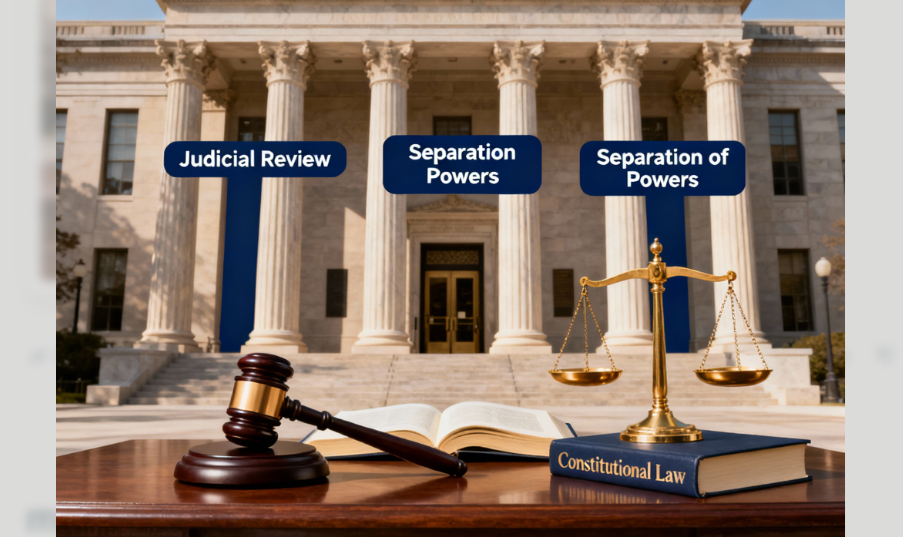Published on: 07th October 2025
Authored by: Lalana P
University Law College and Department of Studies in Law, Bangalore
Court: Supreme Court of India
Bench Strength: 7 Judges (Constitution Bench)
Judges: Justice P.N. Bhagwati (delivered majority opinion), Justice A.C. Gupta, Justice S. Murtaza Fazal Ali, Justice V.D. Tulzapurkar, Justice R.S. Pathak, Justice E.S. Venkataramiah, Justice D.A. Desai.
Date of Judgment: 30 December 1981
Relevant Provisions / Statutes
Constitution of India:
-
- 124 – SC Judges’ appointment
- 217 – HC Judges’ appointment
- 222 – Transfer of Judges
- 226 – Writ jurisdiction
Fundamental Rights:
-
-
- 14 – Equality before law
- 19(1)(a) – Freedom of speech & expression
-
Doctrine: Judicial independence; primacy of executive in appointments.
Brief facts
This case was about the transfer of High Court judges and the government’s refusal to extend the term of some additional judges. Lawyers argued that giving too much power to the government in appointing or transferring judges would weaken judicial independence.
Issues
- Does the executive have primacy in appointing and transferring judges of the Supreme Court and High Courts?
- Does the non-renewal of additional judges affect judicial independence?
- Are government documents on judicial appointments and transfers accessible to the public?
- What is the scope of judicial review over executive decisions in these matters?
Arguments
Petitioners’ Arguments (Challenging Executive Control):
- Excessive Executive Power: The government’s primacy in appointing and transferring judges undermines judicial independence.
- Non-Renewal of Additional Judges: Denying extension to additional judges violates their rights and affects judicial functioning.
- Transparency: The public has a right to access government documents related to judicial appointments and transfers under the principle of transparency.
- Need for Judicial Primacy: The judiciary should have greater say in appointments and transfers to maintain independence and integrity.
Respondent’s Arguments (Union of India / Government):
- Executive Primacy: The government must have the final authority in appointments and transfers to ensure accountability and proper administration.
- Consultation with Judiciary: The executive consults the Chief Justice, but the CJI’s opinion is advisory and not binding.
- Discretion on Additional Judges: Decisions on extensions or non-renewal of additional judges are within the executive’s discretion.
- Confidentiality of Documents: Government documents related to judicial appointments cannot be made public automatically, to preserve confidentiality and proper functioning.
Judgement
The Supreme Court ruled that the executive has the primary power to appoint and transfer judges of the Supreme Court and High Courts. The opinion of the Chief Justice is not binding on the government. Decisions of the executive regarding appointments or transfers are open to limited judicial review to prevent arbitrariness. The Court also held that government documents related to these decisions are not automatically accessible to the public.
Ratio Decidendi
The Supreme Court held that the executive has primacy in the appointment and transfer of judges of the Supreme Court and High Courts, and that the opinion of the Chief Justice of India is not binding on the government.
However, the Court clarified that such executive decisions are subject to limited judicial review to ensure they are not arbitrary or unreasonable.
Additionally, the Court ruled that government documents related to judicial appointments and transfers are not automatically open to public inspection, balancing transparency with confidentiality.
This judgment emphasized executive control over judicial appointments, a position later overruled by the Second and Third Judges Cases, which established the collegium system giving primacy to the judiciary.
Obiter Dicta
The Court made several observations that, while not forming the binding ratio, provided insights into its reasoning:
- Judicial Independence: Emphasized the importance of maintaining judicial independence, though the executive was given primacy in appointments.
- Transparency and Access to Documents: Discussed the balance between transparency and confidentiality, suggesting that not all government documents related to judicial appointments are automatically accessible to the public.
- Judicial Review: Acknowledged the role of judicial review in ensuring that executive decisions are not arbitrary, even if the judiciary does not have the final say in appointments.
Final decision
- Executive Primacy in Appointments and Transfers:
- The Court ruled that the executive has the primary authority to appoint and transfer judges of the Supreme Court and High Courts.
- The opinion of the Chief Justice of India (CJI) or other judges is advisory and not binding on the government.
- This gave the executive significant control over the composition of the higher judiciary.
- Limited Judicial Review:
- While the executive had primacy, the Court clarified that its decisions could be reviewed only to check arbitrariness or malafide action.
- The judiciary could intervene if the executive acted unreasonably, but it could not take over the discretion of the executive.
- Non-Renewal of Additional Judges:
- The Court upheld the government’s decision not to extend the tenure of additional judges as within its discretion and not unconstitutional.
- Access to Government Documents:
- The Court ruled that government documents regarding appointments or transfers are not automatically public, balancing confidentiality with the need for limited transparency.
- Significance of the Judgment:
- This decision favoured executive control over the judiciary and limited judicial independence in appointments.
- It was later overruled by the Second and Third Judges Cases (1993 & 1998), which established the collegium system, giving primacy to the judiciary in such matters.
Conclusion
In my view, the S.P. Gupta case was a turning point that showed how tricky it can be to balance government control and judicial independence. The Court gave the executive more power over appointing and transferring judges, but still allowed the judiciary to step in if decisions were clearly unfair. While this approach gave the government the upper hand for a while, it also paved the way for later reforms like the collegium system, which strengthened the judiciary’s role. Overall, the case reminds us that a fair and independent judiciary needs both checks and balances to work properly.




